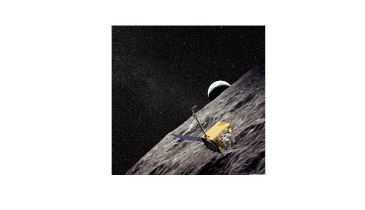Deep Time Moon Theories in Trouble
Deuteronomy 4:19
“And lest thou lift up thine eyes unto heaven, and when thou seest the sun, and the moon, and the stars, even all the host of heaven, shouldest be driven to worship them, and serve them, which the LORD thy God hath divided unto all nations under the whole heaven. (Deuteronomy 4:19)
 It is over half a century since human beings first walked on the surface of the Moon. With the passage of time, and the advent of missions such as the Hubble Space Telescope and the ever-popular Mars probes and rovers, one might have thought that there was nothing new to learn about the Moon. So listeners might not have been aware of the Lunar Reconnaissance Orbiter, launched in 2009, and still giving useful data a decade later.
It is over half a century since human beings first walked on the surface of the Moon. With the passage of time, and the advent of missions such as the Hubble Space Telescope and the ever-popular Mars probes and rovers, one might have thought that there was nothing new to learn about the Moon. So listeners might not have been aware of the Lunar Reconnaissance Orbiter, launched in 2009, and still giving useful data a decade later.
It had been thought that the Moon did not have a plentiful supply of metals. This is because of the deep-time theory that the Moon was formed when a Mars-size planet struck the Earth about 3.9 billion years ago. This would have explained the paucity of metals on the Moon. But radar analysis by the LRO of dust at the bottom of lunar craters shows a much higher concentration of metals than previously thought. Indeed, it now appears that the Moon’s crust has a higher concentration of metals than that of the Earth. This is a severe problem for the prevailing deep-time theories on how the Moon was formed. The traditional evolutionary theory is designed to explain how an Earth, formed from gravitationally aggregated dust, could have developed its layers of crust, mantle, and inner and outer cores.
Creationists do not have such a problem. The Bible makes it clear that God made the Earth on Day One, while He made the Moon separately three days later.
Prayer: Lord, You confound the opinions and schemes of people who refuse to acknowledge You. Yet, Your power has been evident from creation in the things which You have made. So we praise Your Name. Amen.
Author: Paul F. Taylor
Ref: University of Southern California. “Higher concentration of metal in Moon’s craters provides new insights to its origin: New observations could challenge previous theories of how the Moon was formed.” ScienceDaily, 1 July 2020. <www.sciencedaily.com/releases/2020/07/200701151724.htm>. Image: LRO, NASA, Public Domain.
© 2021 Creation Moments. All rights reserved.